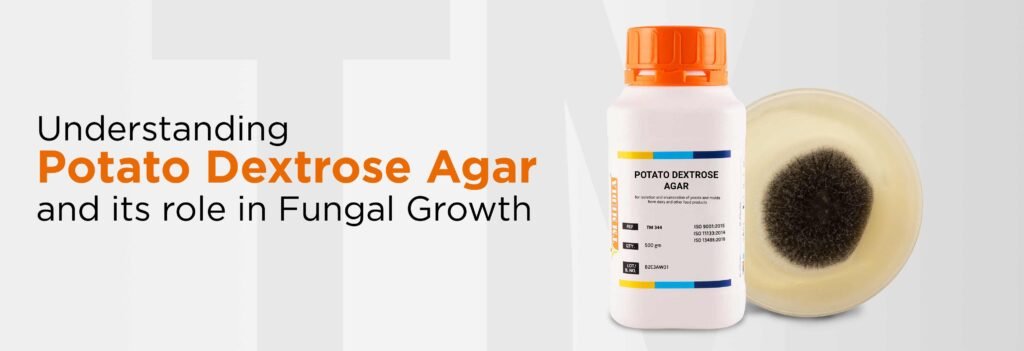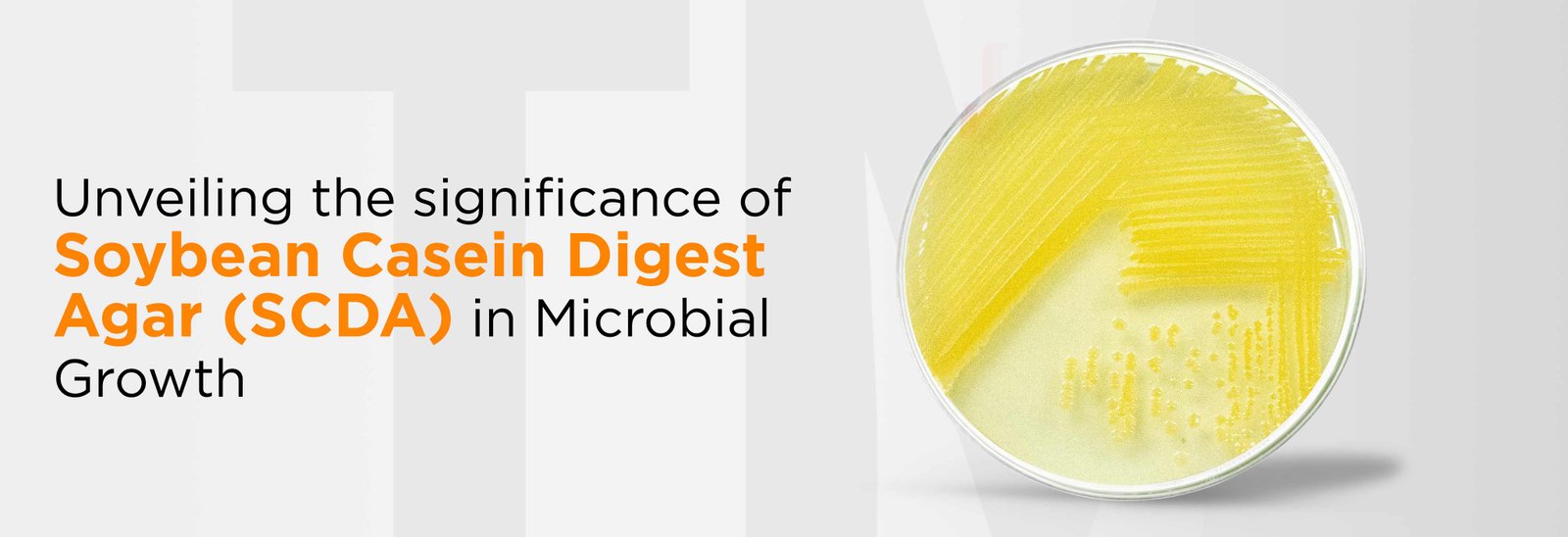

Potato Dextrose Agar (PDA) is a widely utilized medium in microbiology, specifically designed for the isolation and enumeration of yeasts and moulds from various sources, with a particular focus on food and dairy products. Recognized and recommended by authoritative bodies, PDA plays a crucial role in fostering fungal growth and facilitating various applications in research and industry.
Let’s explore the composition of PDA to understand how it promotes luxuriant fungal growth. The primary ingredients include potato extract, dextrose, and agar. The potato extract provides essential nutrients, and dextrose serves as a carbohydrate source for the fungi. The inclusion of agar helps solidify the medium, providing a suitable substrate for fungal development.
| Ingredients | Quantity (Gms/Ltr) |
| Potato extract | 4.00 |
| Dextrose | 20.00 |
| Agar | 15.00 |
The principle behind PDA’s effectiveness lies in the promotion of fungal growth through the combination of potato extract and dextrose. Additionally, the medium’s pH is crucial, with an adjustment to 3.5 using tartaric acid. This pH level inhibits bacterial growth, ensuring a selective environment for fungi. It is important to note that heating the medium after acidification should be avoided, as it may lead to the hydrolysis of the agar, making it unable to solidify.
Proper preparation and sterilization are vital for the success of PDA in fostering fungal growth. Follow these instructions for optimal results:
PDA is recommended by APHA and the FDA for plate counts of yeasts and moulds in the examination of different samples. Its ability to support the growth of a wide range of fungi makes it an ideal medium for this purpose.
PDA is employed to stimulate sporulation in fungi. This is particularly useful in research settings where the study of fungal reproductive structures is essential.
The medium serves as a reliable substrate for maintaining stock cultures of certain dermatophytes. This is crucial for preserving and studying specific fungal strains over time.
PDA aids in the differentiation of typical varieties of dermatophytes based on pigment production. This differentiation is valuable in both research and diagnostic applications.
PDA’s endorsement by various pharmacopoeias, including USP, BP, EP, and JP, highlights its acceptance as a standard medium for the growth of fungi in pharmaceutical and medical contexts.
| Fungi | Texture | Surface Colour | Reverse Colour | Zonation | Sporulation |
| Aspergillus candidus | Velvety thick | Creamy white | Slightly creamy | Radially furrowed on the reverse | Moderate |
| Orange to chocolate color | Velvety | White with typical black spores | Yellow | Heavily furrowed on the reverse | Heavy |
| Aspergillus sulphureus | Velvety | Dirty white with yellow spores at the center | Orange to chocolate colour | Slightly radially furrowed | Moderate |
| Penicillium corylophilum | Velvety | Dark green | Colourless to Creamy | With a shallow center and radially furrowed, raised margin | Moderate |
| P. expansum | Velvety | Dark green with clear exudates and a distinct, sterile white margin | Yellow | Radially furrowed | Heavy |
| Fusarium oxysporum | Floccose | Magenta pink | Magenta-red turning violet | With concentric zones of dark and light reddish coloration | Poor |
Potato Dextrose Agar (PDA) is a versatile and widely accepted medium in microbiology, playing a crucial role in fostering fungal growth and supporting various applications in research, industry, and diagnostics. Understanding its composition, principles, proper usage, and result interpretation is essential for researchers and professionals working with fungi.
TM Media stands as your ultimate partner, offering top-tier solutions for all your laboratory needs. Our commitment to quality is exemplified in our meticulously crafted Potato Dextrose Agar (PDA), adhering to the standards of renowned organizations. At tmmedia, we provide a comprehensive suite of microbiological products, ensuring you have access to everything required for your research.
Choose TM Media to elevate your microbiological endeavours. Visit our product page to explore our catalogue and experience excellence in every aspect of your research journey.

The specter of antimicrobial resistance (AMR) hangs over modern medicine. Antibiotics – once a miracle are losing their power as...
Read More
We are thrilled to announce that TM Media has been recognized as the LeadingBiotechnology Company at the prestigious 6th Elets...
Read More
Think of a field as a big garden where tiny superheroes, called microbes, work behind the scenes. They’re not just...
Read More
Maintaining the highest standards of quality and safety is paramount in pharmaceutical manufacturing. Strict adherence to current good manufacturing practices...
Read More
In the complicated world of microbiology, where precision and reliability are of utmost importance, Soybean Casein Digest Agar (SCDA) stands...
Read More